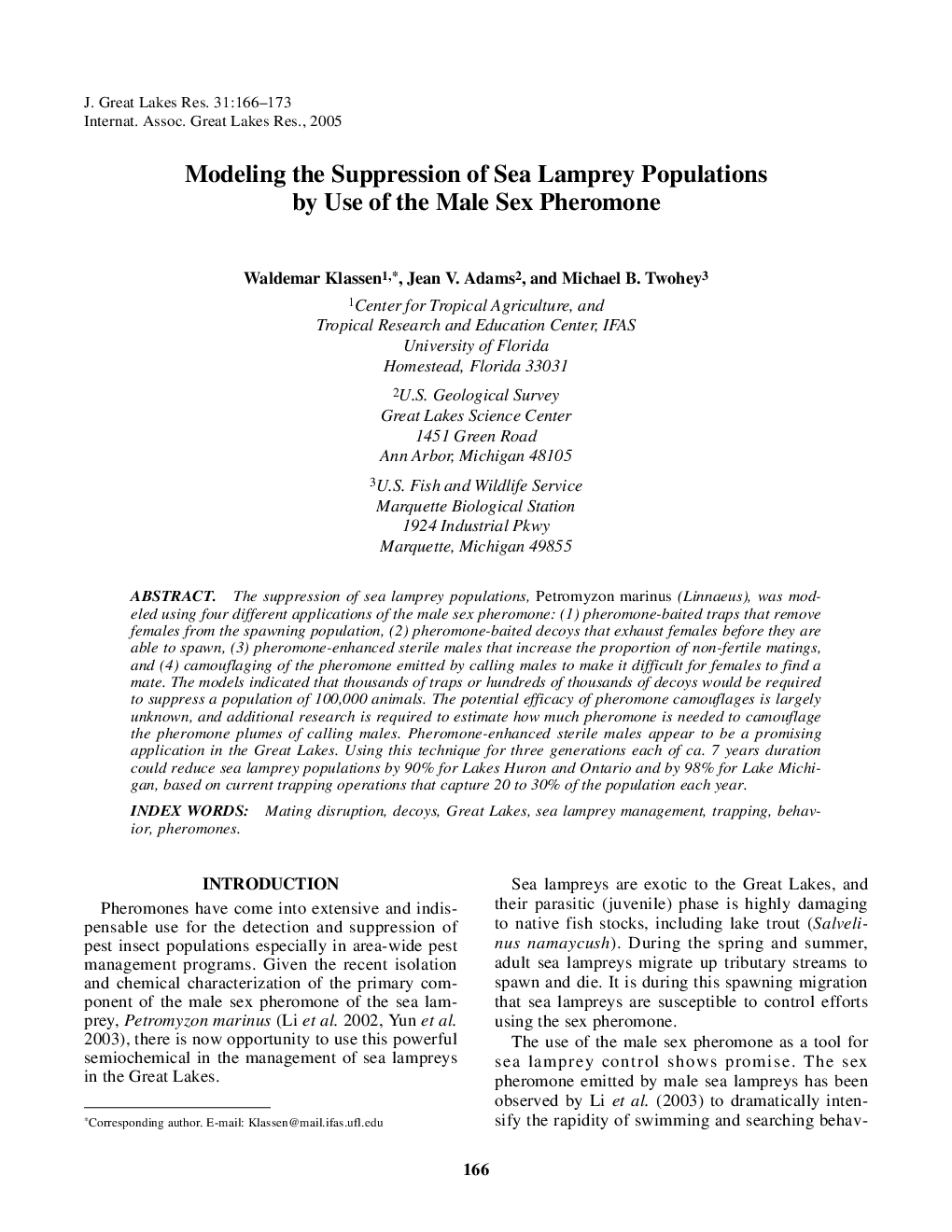| Article ID | Journal | Published Year | Pages | File Type |
|---|---|---|---|---|
| 9450017 | Journal of Great Lakes Research | 2005 | 8 Pages |
Abstract
The suppression of sea lamprey populations, Petromyzon marinus (Linnaeus), was modeled using four different applications of the male sex pheromone: (1) pheromone-baited traps that remove females from the spawning population, (2) pheromone-baited decoys that exhaust females before they are able to spawn, (3) pheromone-enhanced sterile males that increase the proportion of non-fertile matings, and (4) camouflaging of the pheromone emitted by calling males to make it difficult for females to find a mate. The models indicated that thousands of traps or hundreds of thousands of decoys would be required to suppress a population of 100,000 animals. The potential efficacy of pheromone camouflages is largely unknown, and additional research is required to estimate how much pheromone is needed to camouflage the pheromone plumes of calling males. Pheromone-enhanced sterile males appear to be a promising application in the Great Lakes. Using this technique for three generations each of ca. 7 years duration could reduce sea lamprey populations by 90% for Lakes Huron and Ontario and by 98% for Lake Michigan, based on current trapping operations that capture 20 to 30% of the population each year.
Related Topics
Physical Sciences and Engineering
Earth and Planetary Sciences
Earth and Planetary Sciences (General)
Authors
Waldemar Klassen, Jean V. Adams, Michael B. Twohey,
